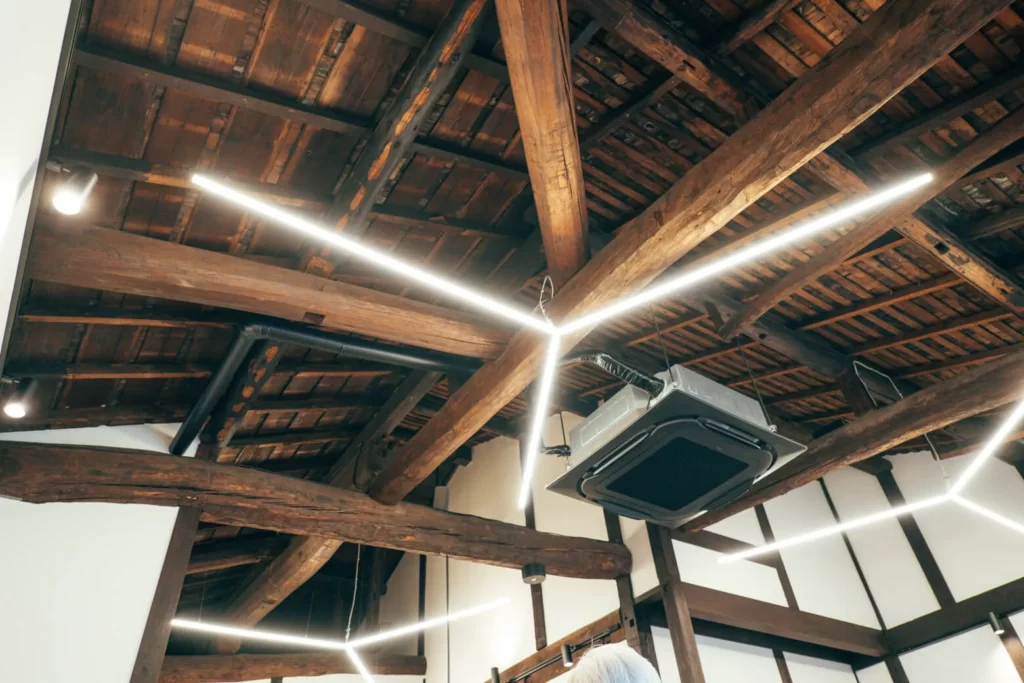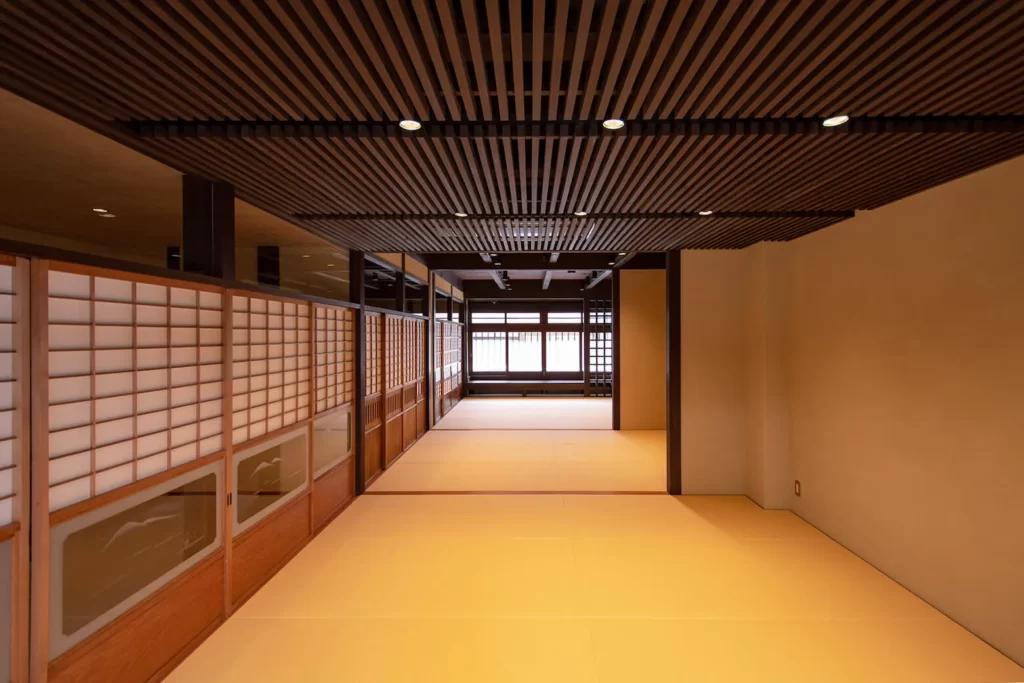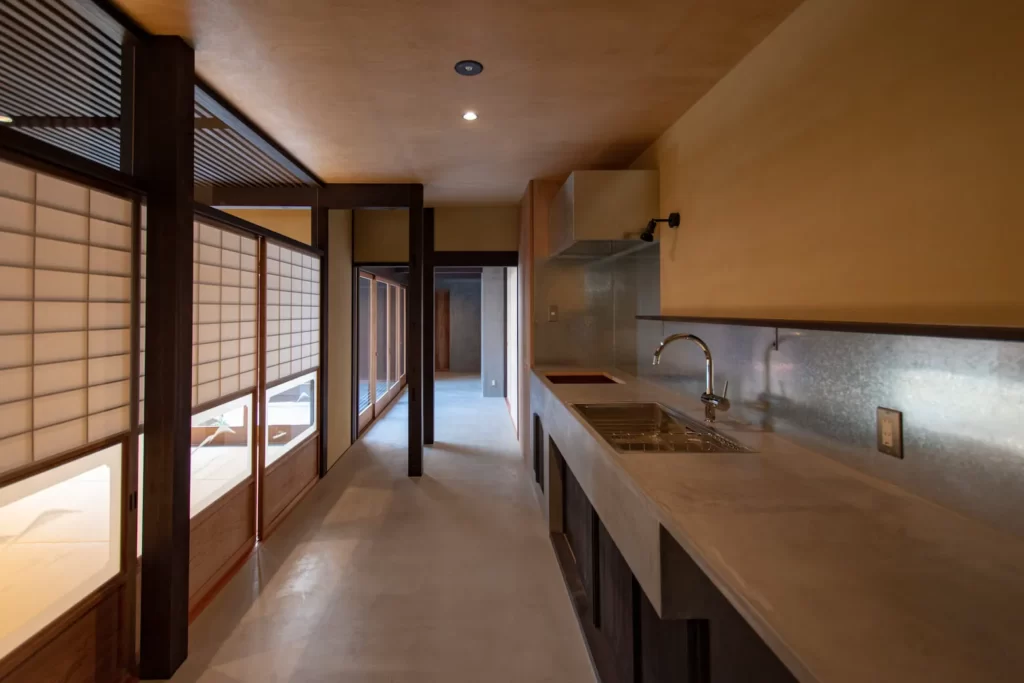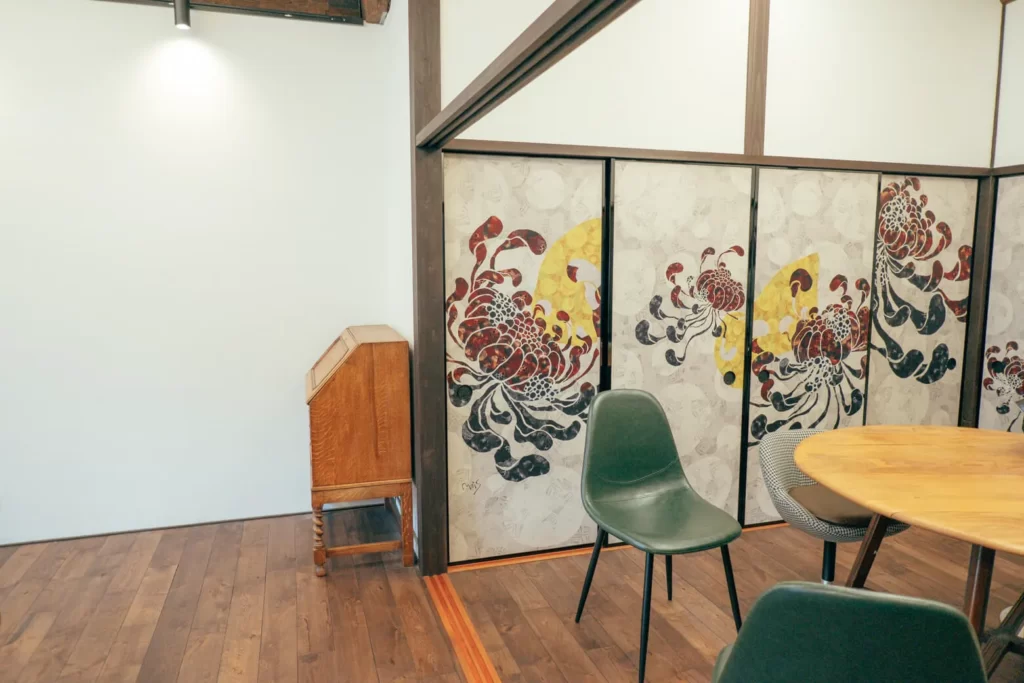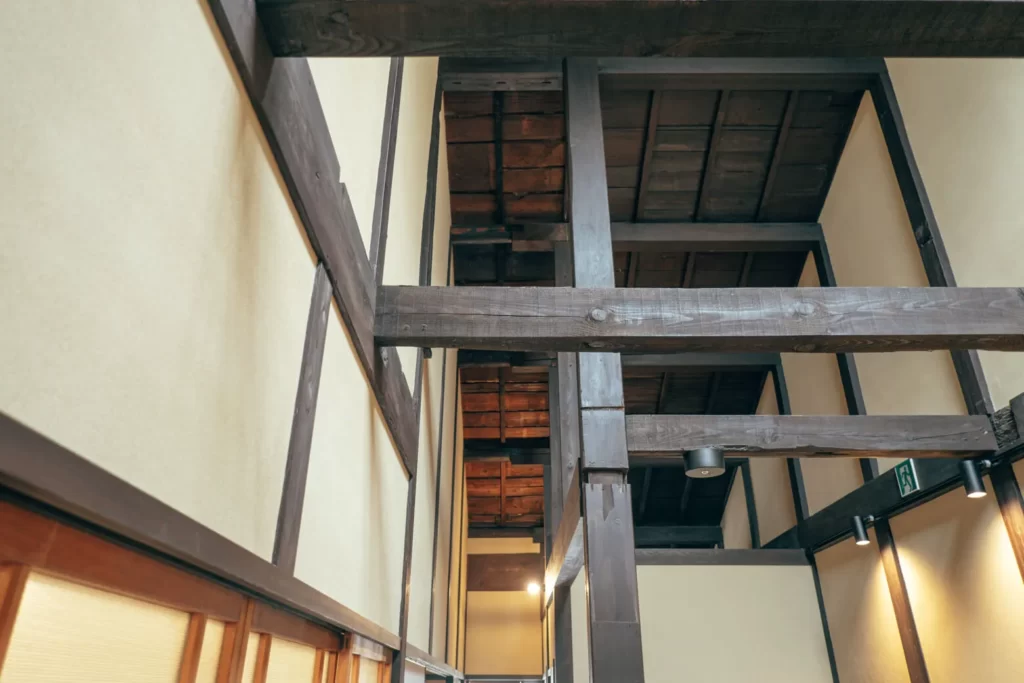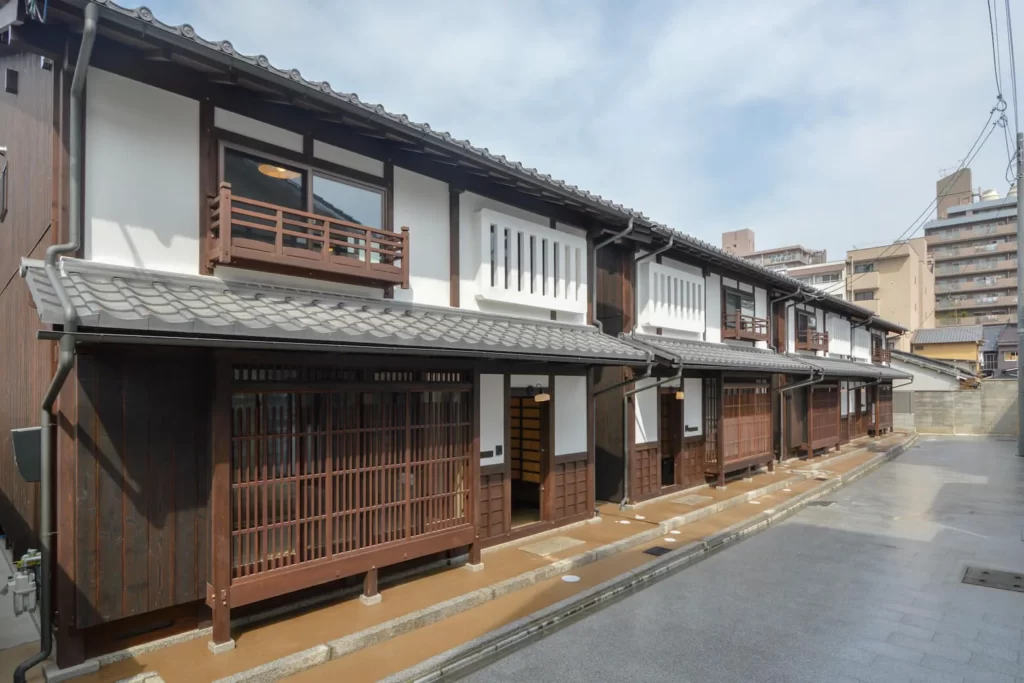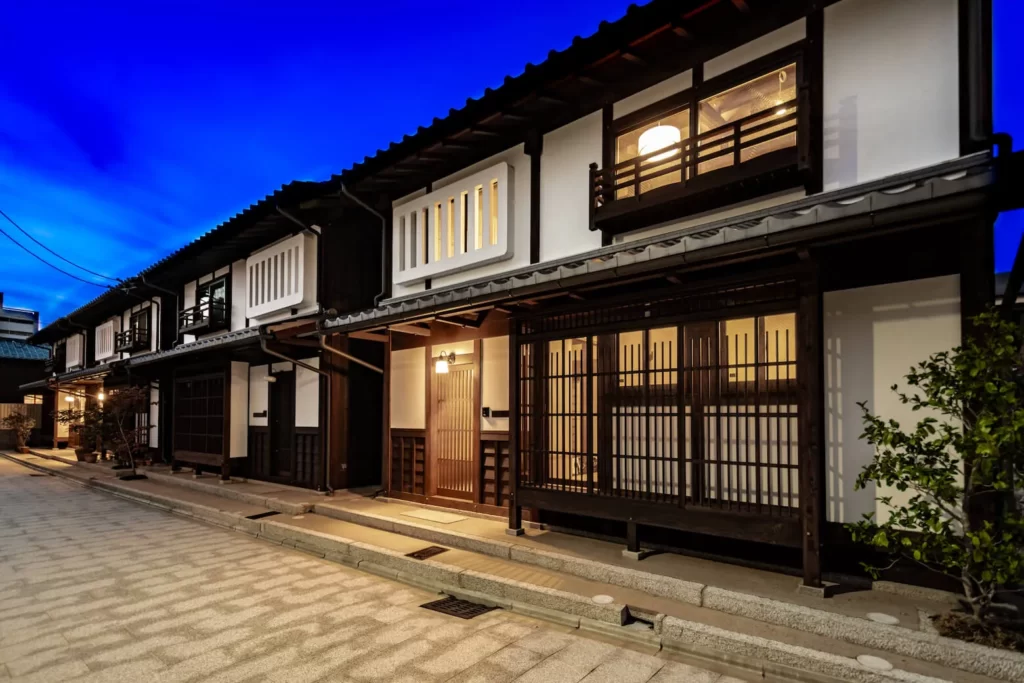Discover Kyoto’s Housing Wonders – Renovation Story of Machiya Houses
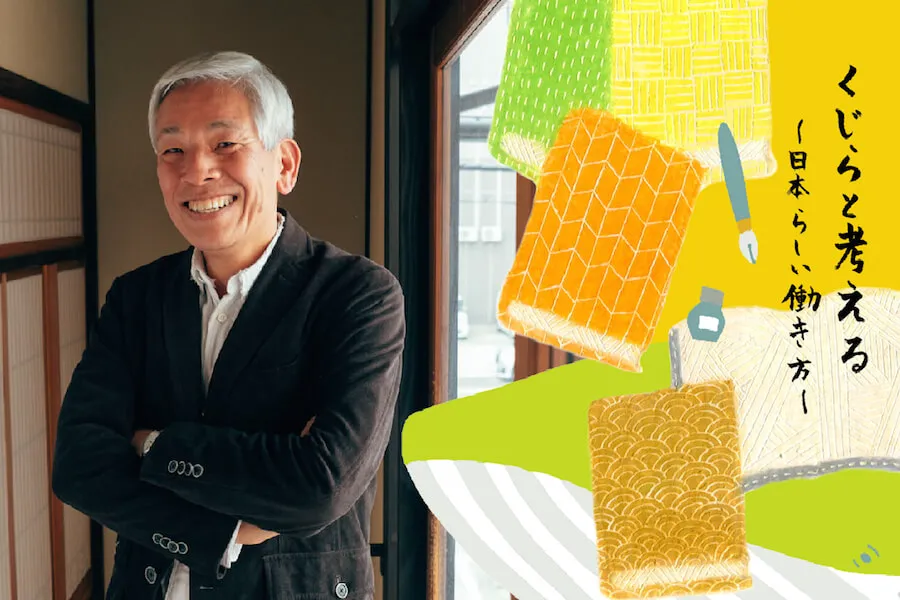
In the bustling streets of Kyoto, Japan, where modernity meets ancient tradition, lies a hidden world of architectural wonders. Picture yourself wandering through the bustling streets of the city, where skyscrapers and crowded commerce dominate the landscape. But take a turn down a quiet side street, and you’ll be transported back in time. Amidst the gentle rustle of leaves and the whispers of history, you’ll find something truly remarkable – Kyoto’s cherished “Machiya” houses.
These architectural marvels known as “Machiya” (町家) houses are traditional wooden townhouses that have been an integral part of Japanese culture for centuries.
In this article, we delve into the fascinating world of Machiya houses and the visionary approach of Kohei Nishimura, CEO and Representative Director of Hachise Co., Ltd., in preserving and reimagining these architectural gems. Nishimura’s company renovates traditional wooden townhouses in Kyoto or the “Machiya” to suit modern lifestyles, in addition to utilizing them in a variety of ways.
Nishimura reveals how these houses become more valuable by revealing a way of pursuing efficiency by making the best use of inefficiencies. We will also discover the secrets behind their enduring appeal.
Breaking the Myth of Short-lived Houses

Hachise Co., Ltd was founded in 1956 by Kohei Nishimura’s father as a wholesaler of textile products. After its establishment, the company found success in selling ready-built houses and is now working in the real estate business. But Nishimura’s journey into the world of Machiya houses truly began in 1999 when he encountered a startling revelation that challenged conventional wisdom. Back then, in the real estate industry, it was widely believed that Japanese wooden houses lost all value within 30 years.
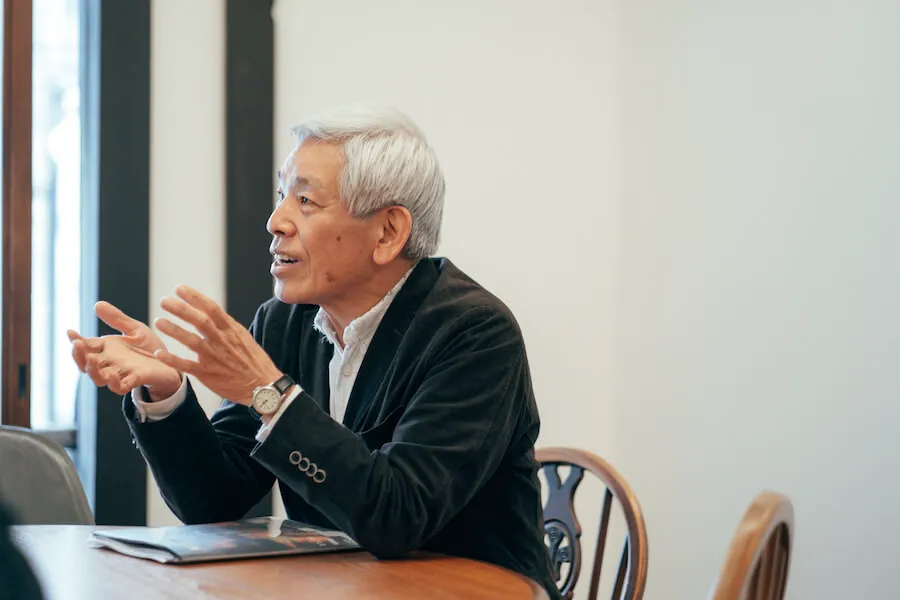
However, when Nishimura decided to renovate an old house instead of tearing it down, he discovered a surprising truth: these supposedly “worthless” buildings sold rapidly. This experience shattered the myth that houses in Japan had a limited lifespan.
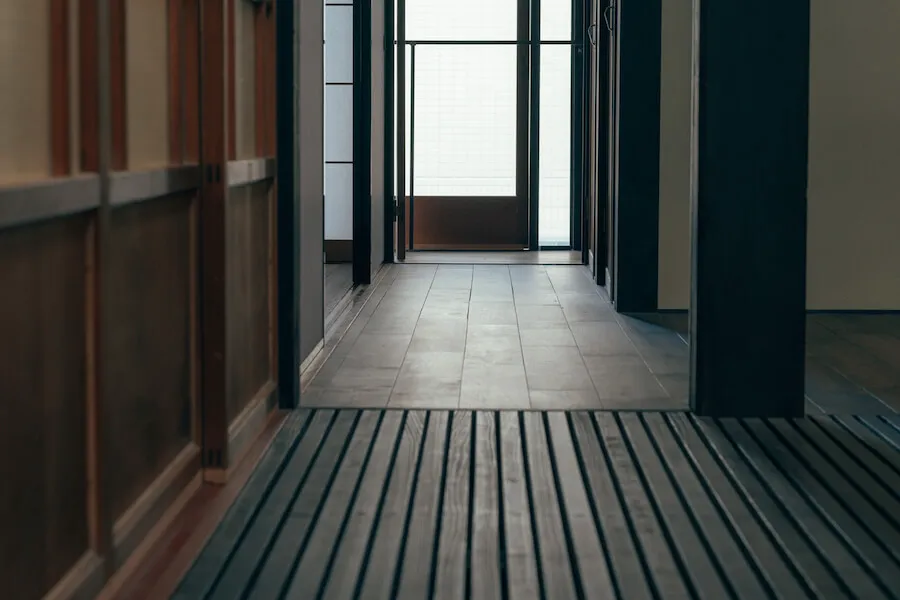
Encouraged by the surprisingly fast sale, Nishimura decided to try renovating more old houses, gradually increasing the number of properties for sale. He researched how customers would respond and what prices they would pay, renovating a variety of properties with different targets and concepts to learn what kind of houses and renovations were most in demand.
Trying to understand what made certain renovations more successful than others, he realized that people were drawn to the traditional charm of Machiya houses. Rather than erasing their history, they cherished the old look, creating a unique demand for renovations that preserved the traditional style.
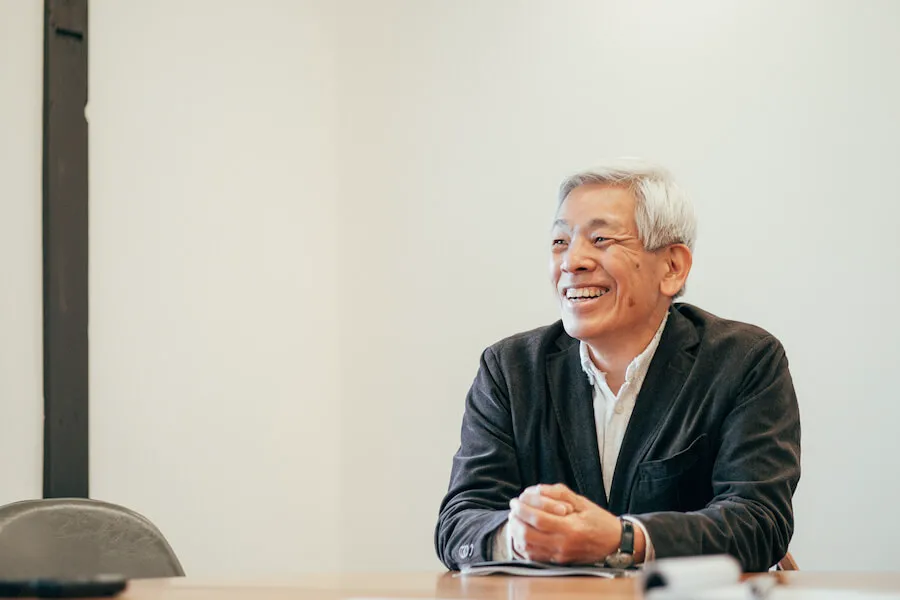
Kohei Nishimura, CEO and Representative Director, HACHISE Co Ltd.
Since 2000, Nishimura has been involved in the sale of used machiya houses, and has also participated in citizen groups such as the Urban Housing Study Group and the Kyoto Machiya Information Center, making proposals to the government regarding the preservation of Machiya houses and townscapes. He also serves as a consultant for vacant houses for the city of Kyoto. In addition to his day job, he also gives lectures at training sessions and seminars for the Kyoto Real Estate Consulting Association, Bukkyo University, Ryukoku University, and other industry organizations. His hobby is jogging 100 kilometers a month, and he routinely runs 5 kilometers each way to and from work.
Retaining Individuality with the Charm of Inefficiency
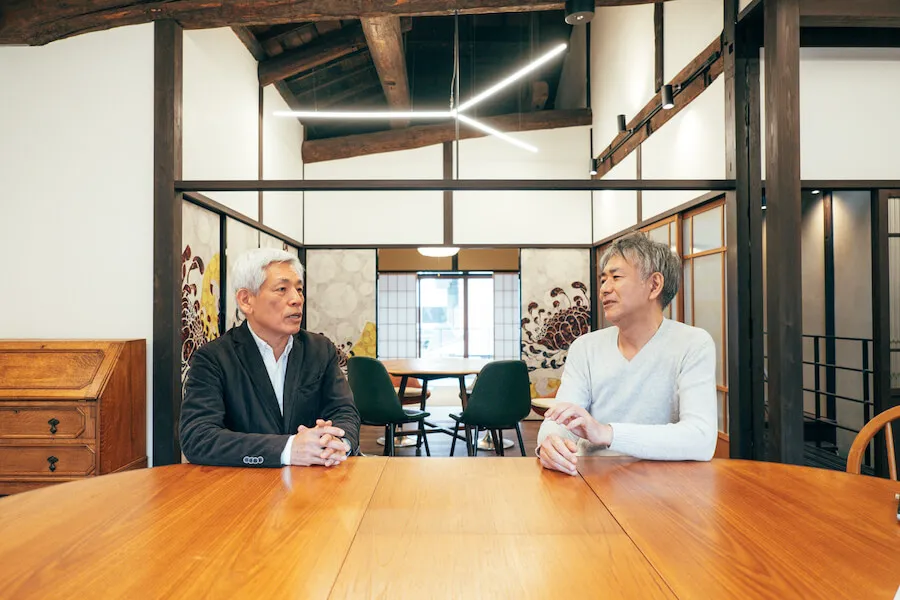
Every day, Hachise renovates Machiya houses to meet the demands of the current era, always taking into account the requests of their customers. So, do they compromise on the “essence” of the Machiya houses to fulfill their customers’ visions?
Nishimura says, “When we renovate, we are careful not to lose the Machiya feel… If we didn’t preserve the atmosphere, I don’t think we would be able to meet the needs of customers who want a Machiya house. It’s hard to find the right balance.”
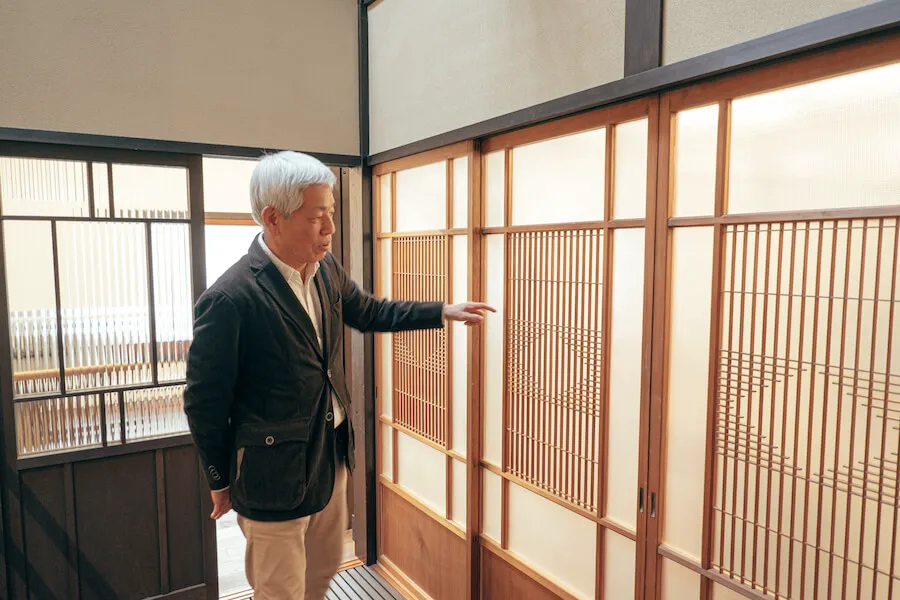
For example, when finishing walls, Hachise does not use vinyl-coated wallpaper. Instead, they make the most of the original clay walls. Sometimes they paint them, and other times they apply textured Japanese paper, to preserve the original feel of the materials.
Another common feature in Machiya houses is the “Hibukuro” (fire bag), an area above the kitchen stove (called “Okudo-san”) that opens into the floor above to allow smoke from the firewood to rise. This reduces some floor space on the second story but provides a distinctive and different living experience compared to modern houses. Nishimura notes that this inefficiency is precisely what sets Machiya houses apart and makes them appealing to a select group of individuals.
In a world driven by efficiency and mass production, Machiya houses stand as a testament to the beauty of inefficiency. They embrace handmade craftsmanship and celebrate the uniqueness of each piece. While modern houses prioritize functionality and uniformity, Machiya houses offer a distinct individuality that resonates with those seeking a more personal and culturally rich living experience.
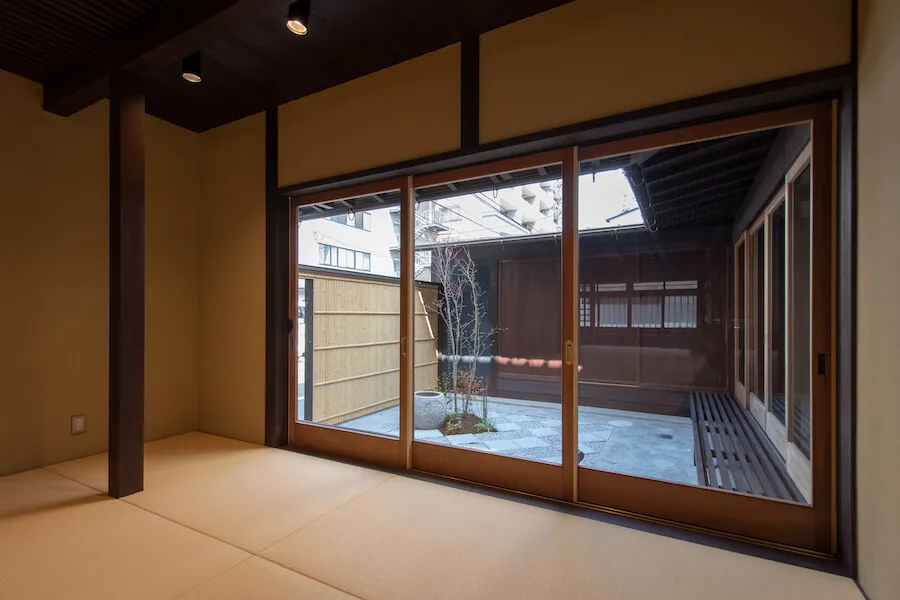
Nishimura emphasizes, “Modern houses are always built with efficiency in mind…That’s why they are all so similar to each other. It’s not interesting. There’s individuality in inefficiency.”
The Uniqueness of Machiya Houses
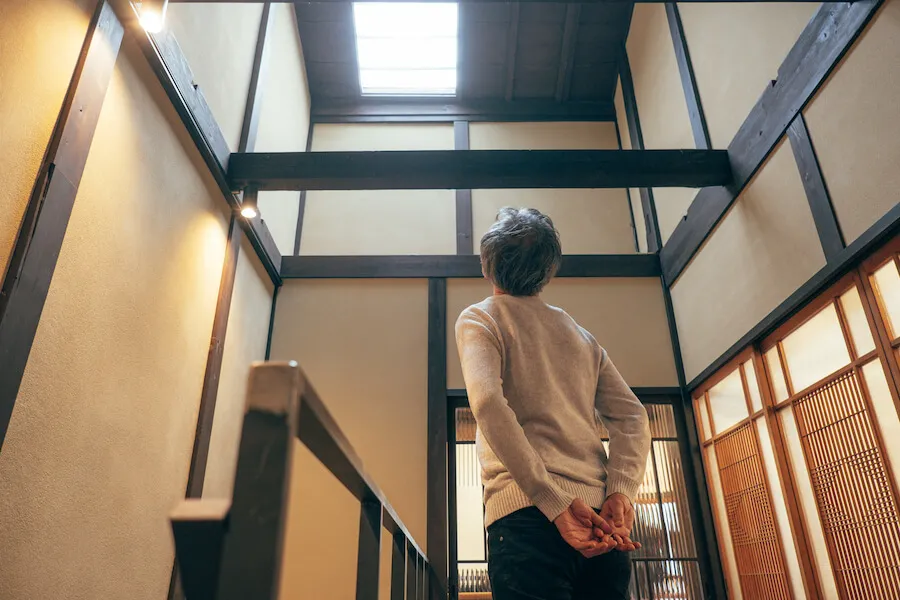
Machiya houses are not just architectural wonders; they represent a rich tapestry of history, culture, and craftsmanship. Their unique design allows nature to play a central role in daily life. These houses adapt to the seasons, allowing the outside environment to become an integral part of daily life.
For instance, the floor plan of a Machiya house is designed to promote easy airflow and create a sense of coolness to cope with Kyoto’s hot and humid summers. Instead of keeping out the outside temperature and sound, a Machiya house allows the environment to enter your life. Living in a Machiya house means experiencing the ever-changing rhythms of nature, a departure from the constant indoor climate control of modern homes.
Probably due to these very reasons, aside from seeking the cultural touch, Hachise receives inquiries from across the country from people eager to embrace the Machiya lifestyle. Approximately 20% of those searching for a house find the charm of Machiya houses irresistible. Explaining the reason behind this, Nishimura says, “I think the senior generation feels a sense of nostalgia, while the younger generation feels a sense of novelty.” This growing interest is not limited to residences; there is a rising demand for Machiya houses to be repurposed as inns, stores, and coworking spaces.
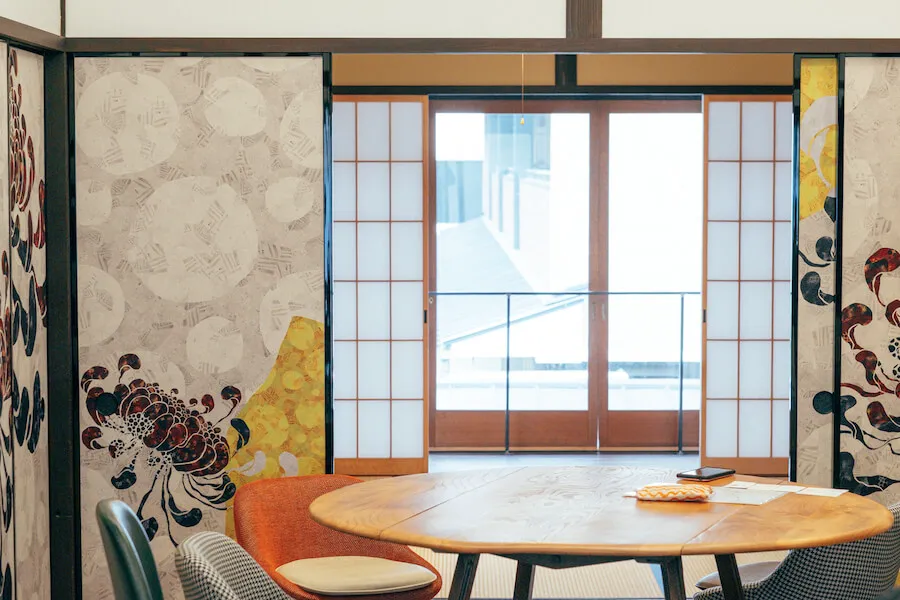
Hachise also believes in promoting individual ideas, which is why they allow the individuals overseeing the renovations to take the lead, encouraging bold ideas and creativity. While not every idea is met with immediate success, this approach prioritizes uniqueness over conventionality, ensuring that each Machiya house retains its character.
Nishimura comments, “Each house is different, so we just hope that there’s one person out there who likes it.”
Are we Nearing the End of the Machiya Housing Culture?
Despite their historical and cultural significance, Kyoto’s Machiya houses face an uncertain future. Approximately 800 of these precious structures are demolished every year, making it vital to find ways to preserve them. Rising land prices and the profitability of turning Machiyas into multistory buildings pose a significant threat to the traditional townscape. According to Nishimura, Machiya House Preservation is the need of the hour.
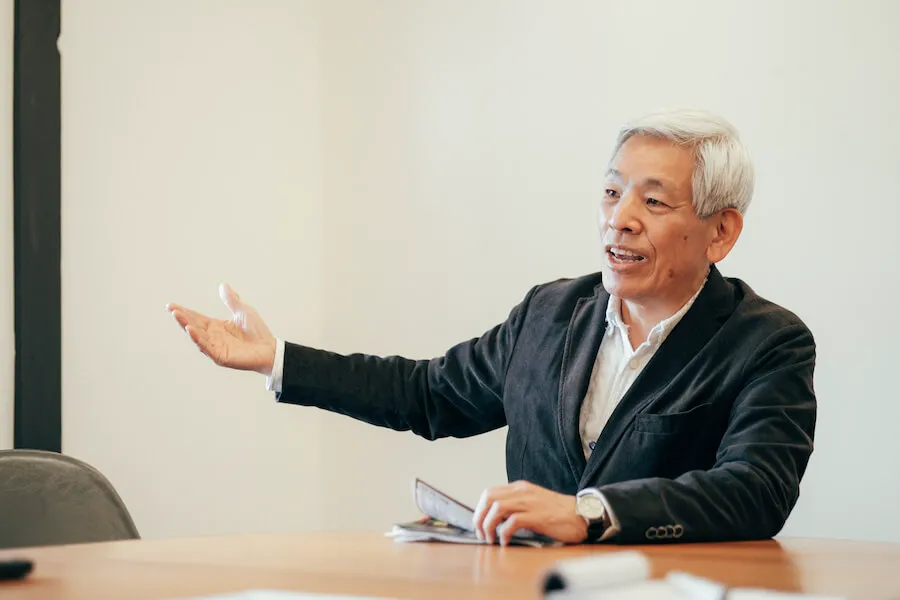
He stresses, “If this situation continues long enough, there won’t be any houses left in 50 years. No matter how many people say they like the townscape of Machiya houses, in reality, more people are trying to destroy them. If we pursue rationality, the Machiya house will be destroyed.”
In 2018, Hachise decided to tackle this challenge head-on by embarking on a unique project: building new Machiya houses using traditional construction methods. These newly built-for-sale houses, listed at ¥50 million each, have attracted considerable attention and admiration. Constructing new Machiya houses with traditional techniques is a rarity in modern Japan, and it’s a testament to Hachise’s dedication to preserving this cultural heritage.
Additionally, Kyoto City and real estate companies like Hachise are collaborating to encourage Machiya house preservation by protecting it from destruction through ways like enacting ordinances to provide notice before demolition. It is now obligatory to provide notification one year in advance before demolishing a Kyoto Machiya house. This gives the authorities and the companies a chance to provide advice on ways to utilize these properties without destroying the Machiya houses.
While the efforts to promote Machiya house preservation have yielded some successes, there are still many houses that face the risk of demolition. Nishimura believes that a stronger mechanism is needed to prevent the destruction of Machiya houses beyond just an ordinance.
Why Bother to Save the Machiyas?
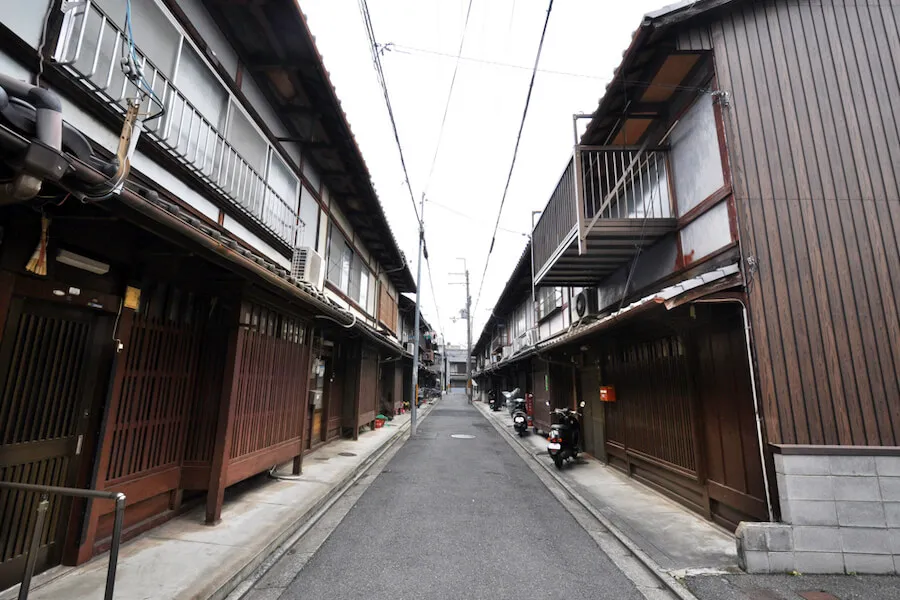
By renovating Machiya houses to meet modern needs, utilizing the properties for new purposes, and collaborating with the government to establish systems of support, Nishimura and his company are working to preserve Kyoto’s Machiya houses. But why do we need to save the Machiyas at all?
For Nishimura, the motivation for this endeavor goes beyond business interests; it runs deep, rooted in a strong sense of responsibility to protect Kyoto’s identity and cultural heritage. He says, “There is a photo from about 150 years ago that shows the view from Yasaka Shrine to Shijo Street. The townscape is very distinctive of Kyoto, with tiled roofs on every building. But if you look out from the same spot today, it looks like any other town. If we don’t take action now, you won’t be able to tell it’s Kyoto anymore.”
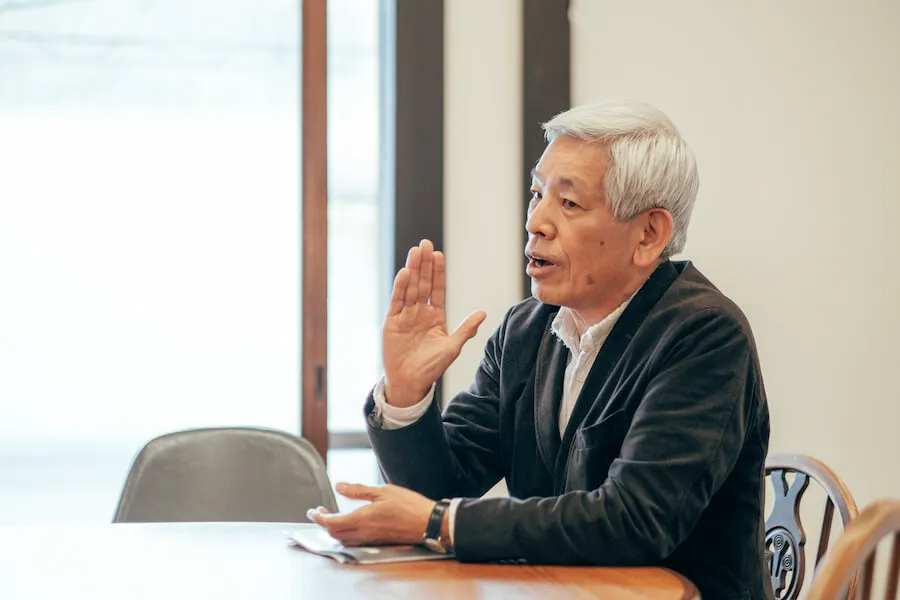
Kyoto has a unique history and culture that has attracted residents and visitors alike. People choose to live in Kyoto because it appeals to them, and others come to visit because there are experiences in Kyoto that you can’t find anywhere else. Machiya house preservation and preserving its ancient townscape are crucial to safeguarding Kyoto’s character and ensuring that it continues to draw people from around the world.
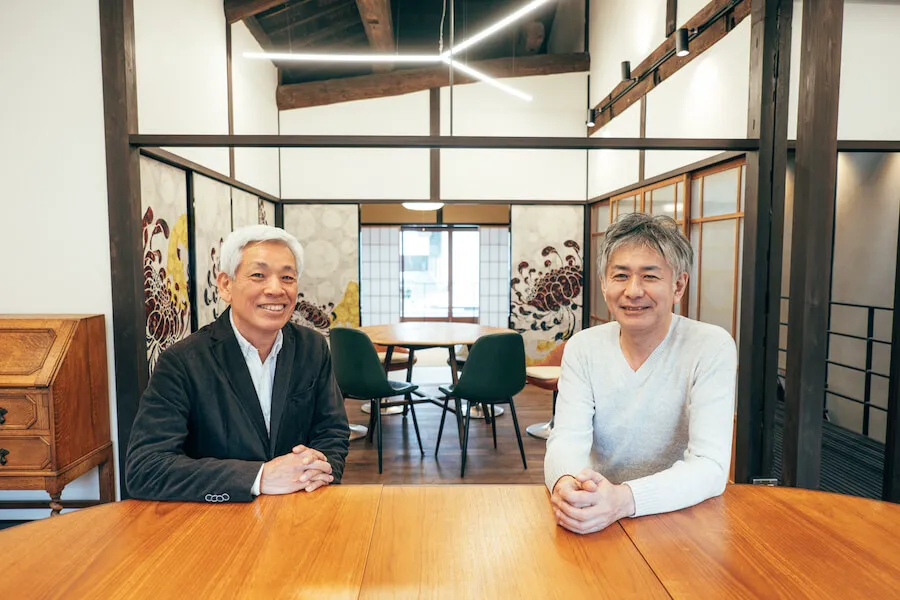
Conclusion: Preserving Machiya, Preserving Heritage
From the Muromachi era to the Edo era and now the modern era, Kyoto’s Machiya houses have evolved to suit the changing world. So they are not just architectural relics; they represent a rich tapestry of history, culture, and craftsmanship.
Kohei Nishimura and Hachise Co., Ltd. are on a mission to preserve and revitalize these timeless treasures. In an era where efficiency often overshadows individuality, Machiya houses, despite their inefficiencies, stand as a testament to the value of embracing the unconventional. And these inefficiencies are, in fact, the very qualities that make these houses invaluable.
As more people seek inner bliss, spiritual sensibility, and connection with nature, the Machiya houses offer the promise of delivering it all, which is why their appeal continues to grow as these cannot be found in mass-produced, ready-built houses.
In an era where many grow up in towering apartments, Nishimura hopes that the allure of Machiya houses, appealing to 20% of house seekers, will survive. The trend of young people favoring traditional Japanese-style spaces, seen in Tokyo’s Kagurazaka district, offers optimism.
The challenge now is to ensure that future generations can appreciate the character and charm of Kyoto’s Machiya houses, preserving the city’s unique identity and cultural heritage.
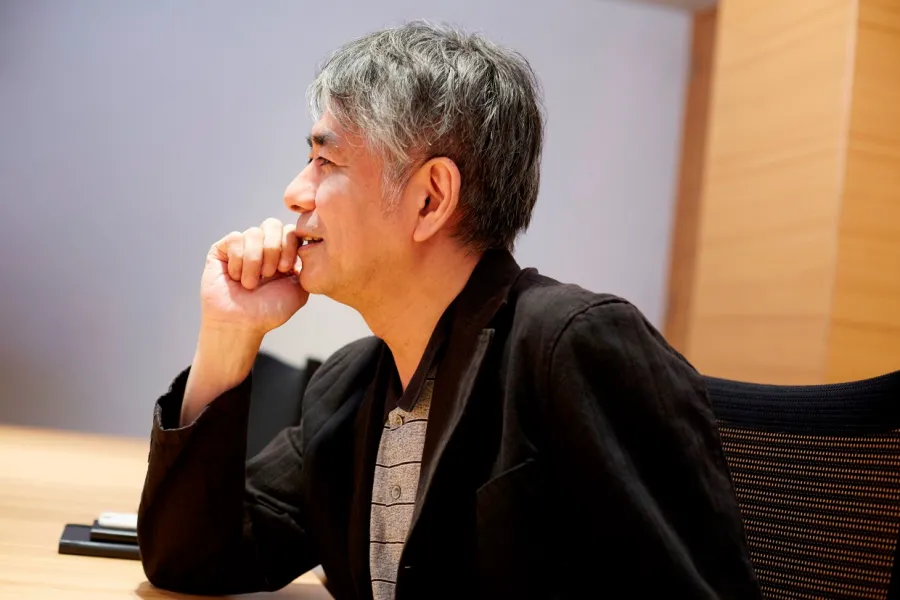
Yasushi Kujirai
Mr. Kujirai is engaged in researching how the working environment should be in order to make everyone involved in the office happy, and developing methodologies and tools to construct such a working environment. For more than 30 years, he has been actively seeking to acquire a wide range of knowledge in order to deal with the extremely interdisciplinary subject of the office. His major publications include “Office Jiten (Office Dictionary),” “Office Environment Planning Handbook,” “Management Innovation and Office Environment,” “Office Evolution,” and “Future Prospects for ‘Hataraku'” (The Future of ‘Work’).
Interviewed: December, 2020
Production Cooperation: Kimi Nakajima
Photo: Yuji Otsubo
Photo by Hachise Co., Ltd




